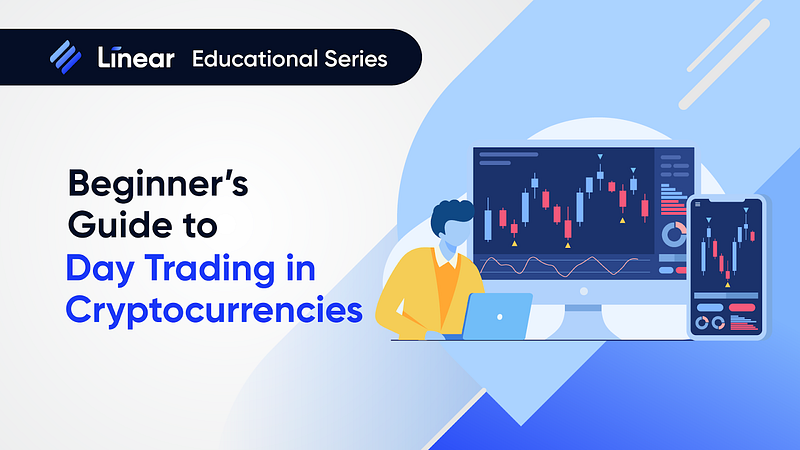
Beginner’s Guide to Day Trading in Cryptocurrencies
Jan 24, 2022 · 3 min read · cat
Share on:
Day trading is one of the most common trading and investing strategies used in the financial market. It relies on frequent trades of one or more securities such as stocks, forex, bonds, currencies, commodities, and of course, cryptocurrency markets, throughout the day to turn a profit. While traditional buy-and-hold investors are concerned with the long-term performance to earn a profit, day traders seek to take advantage of more immediate profit-making opportunities. The risk associated with day trading is high because of its process of trying to profit from price movements, demand, and supply activities within a short-time window.
Recently, the crypto market has been a big buzz among expert day traders because of its numerous features. Unlike most traditional markets, the crypto market doesn’t close at all. Also, day trading in crypto doesn’t require a subscription to a centralized broker, making the ability to indulge in short-term crypto trades more accessible than traditional day trading.
Although cryptocurrency seems an easier and more profitable way of investing or making day trades, it has its risk. Day traders interested in trading cryptocurrencies should take note of the high volatility and speculative nature of the crypto market.
They should, no matter the nature of the market, have a deep understanding of cryptocurrency and varieties of trading principles. The first rule of trading is to invest only what you are capable of losing. If you can manage the risks of the crypto market efficiently, then here are the steps to get started day trading crypto.
1.- Choose a Trading Platform
The first step a day trader has to take is deciding what platform to use. Exchange liquidity, asset liquidity, and fees are at the top of a trader’s list when choosing the right platform to buy and sell crypto. The volatility of the crypto market means the value of digital assets can oscillate wildly within seconds. Traders looking to maximize profits in this market need to move fast.
Note that the options and differences between the many crypto exchanges can be overwhelming, but choosing the right platforms depends on the conditions listed below:
- Years of operation
- Listed or supported cryptos
- Transaction fees or exchange charges
- Deposit methods
- User reviews
- Liquidity: Liquidity refers to the speed and the ease of access a trading platform has in converting one asset into another without affecting its price.
2.- Choose an Investment
Once you choose and set up the right platform, it’s crucial to pick what you’re interested in investing in. For crypto day traders, market volatility is a vital part of making a trade. The same market conditions that frighten buy-and-hold investors are the chaos that provides profit opportunities for day traders. Volatility, liquidity, and volume are necessary factors for day traders to actively participate in the cryptocurrency market. Finding crypto assets that are highly liquid and volatile is a good start in identifying suitable cryptocurrencies for day trading.
3.- Implement a Trading strategy
Today, traders use many methods to take advantage of the short-term volatility of the cryptocurrency market. Cryptocurrency day traders should develop a research-based winning strategy and plan well for when to open and close positions. Here are some of the most popular strategies for crypto day trading.
- Arbitrage: is when traders buy a cryptocurrency on one exchange platform and make a profit by selling it immediately on another exchange at a higher price.
- Range trading: involves watching the price ranges within the market structure and creating trade ideas based on those ranges.
- Scalping: involves taking advantage of small price moves that happen in short time frames.
Conclusion
Cryptocurrency day trading is a high-risk strategy to frequently buy and sell crypto for a short-term profit. Anyone interested in day trading of cryptocurrencies should know where to trade, have a detailed day trading strategy, and stick to entry and exit points.
About Linear Finance
Linear Finance is a cross-chain compatible, decentralized delta-one asset protocol that allows users to get synthetic exposure to various assets, including cryptocurrency, commodities, and market indices. Users can utilize our cross-chain swap functionality to instantly swap assets across leading blockchain environments and DeFi protocols with unlimited liquidity and zero slippage.
Website | Exchange |Discord | Twitter | Announcements